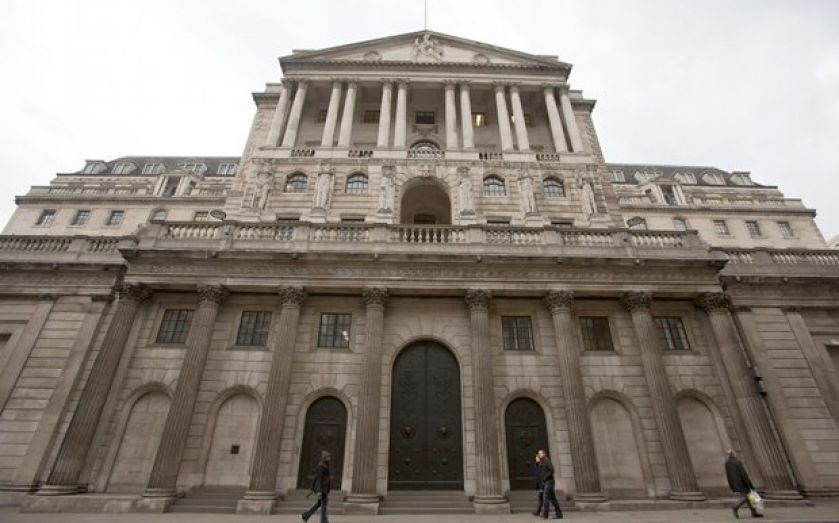History repeats itself: Why the Bank’s interest rates pledge lacks credibility

FROM 1992 until 2007, the UK had a monetary policy framework (a system for how interest rates were set and money printed) called “inflation targeting”. By 2007, the target was 2 per cent inflation, but inflation was allowed to deviate from this point target, for short periods, by up to 1 per cent provided it returned back towards 2 per cent in the medium term.
So, for example, if inflation rose from 2 per cent to 2.5 per cent, the Bank of England didn’t have to raise rates to counter that, provided inflation was likely to return to 2 per cent in the medium term. But if inflation might go above 3 per cent, or below 1 per cent, the Bank had to act. If inflation went above 3 per cent or below 1 per cent, the governor of the Bank of England would have to write a personal letter to the chancellor of the Exchequer, explaining why the Bank had failed to abide by the rule. From 1992 until 2007, inflation always stayed within the target range.
From 2007, that framework collapsed. Although the August 2006 Bank of England Inflation Report predicted a significant risk that inflation would exceed the range early in 2007, the Bank decided not to raise rates, hoping all would be well. But it wasn’t – in early 2007 inflation reached 3.1 per cent.
The Bank and the chancellor responded to missing the target by redefining it. From 2007 on, there was no presumption that inflation had to stay within 1 per cent of the 2 per cent target, come what may. Instead, provided that the Bank said it believed that inflation would eventually drop back to 2 per cent, it could deviate from the 2 per cent target in the short term by as much as it liked.
The Bank immediately started taking advantage of this extra licence. In 2008, inflation reached 5 per cent. The Bank was not admonished for this by the chancellor. The target band was not revised to something greater than 1 per cent. There was no guidance offered as to how far above target it was okay for inflation to be.
Since December 2009, inflation has been at 2.5 per cent or higher in all but three months. In 2011, inflation again reached 5 per cent, and yet the Bank of England did not raise interest rates even once as it rose. To all intents and purposes, the inflation target provided no guidance whatever as to the Bank’s medium-term intentions.
Having no idea what the Bank’s intentions are could be problematic, as the Bank has attempted to stimulate the economy by printing money (quantitative easing (QE)). If economic agents believe that, as soon as the economy starts to recover, QE will be withdrawn and interest rates raised, they will set aside some of the extra cash provided by QE so they have liquidity available when the tightening occurs, and it won’t be so effective in boosting recovery. It would therefore be useful to offer some “guidance” as to the Bank’s intentions.
A decade or so ago, when this issue arose in Japan, I and others argued forward guidance should take the form of what is called a “price level” target – a commitment to achieve a certain average inflation rate over time, rather than just a one-year number, so if inflation were “too low” in one year it would have to be higher later to “catch up”.
The Federal Reserve in the US has adopted a different form of forward guidance, telling markets it would not raise rates until an unemployment target is met. On Wednesday, the new Bank of England governor Mark Carney adopted a version of the US scheme here, with no interest rate rises until unemployment drops below 7 per cent unless inflation is going to be above 2.5 per cent.
The reason for Carney’s forward guidance is that inflation targeting has collapsed and provides no guidance. But it has no credibility, because no Bank of England commitments have credibility when the Bank has comprehensively failed to meet the inflation target for six years. If Carney wants us to start believing promises about the future, it would be good to start by keeping promises in the present.
Targeting unemployment is a terrible idea in a recovery, because unemployment often rises early in recoveries. In the 1980s growth started in 1981, but unemployment kept rising until 1984.
Mercifully, there is no chance of interest rates staying at 0.5 per cent until 2016, as the Bank now implies, if growth is around the 3 per cent the Bank forecasts. Strong growth will mean rapidly rising inflation, and rates will start to rise, forward guidance or no forward guidance. In 2009, Carney promised, at the Bank of Canada, not to raise rates for years, but in 2010 promptly broke his promise. Then again, breaking promises is something the Bank of England knows all about. He should fit right in.
Andrew Lilico is the chairman of Europe Economics.
Follow on Twitter: @AndrewLilico